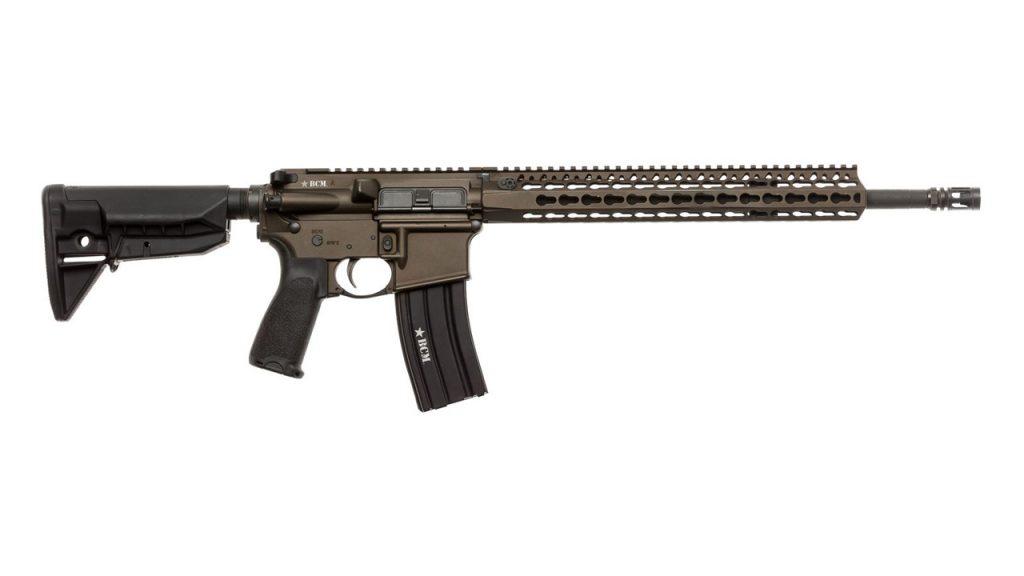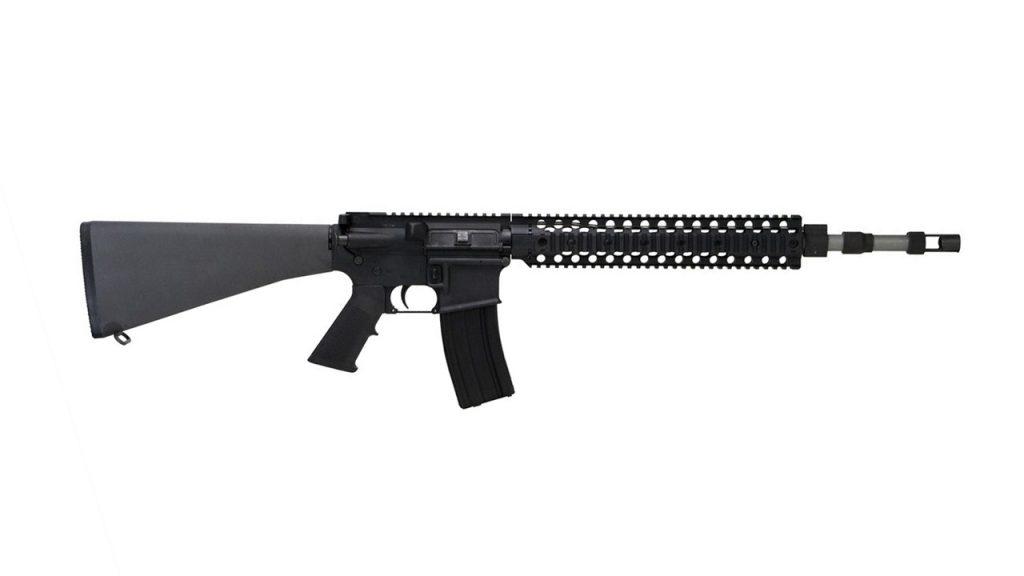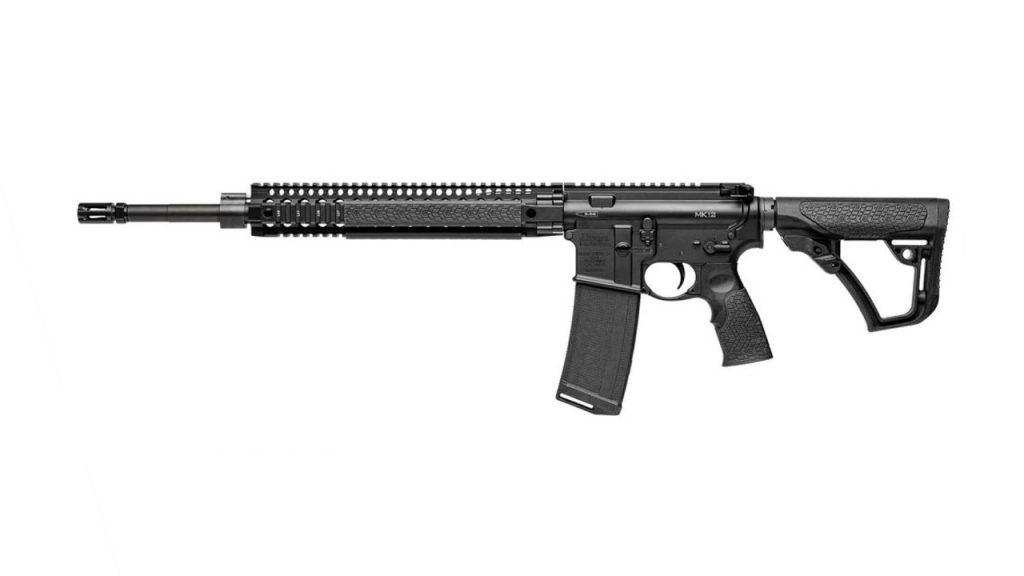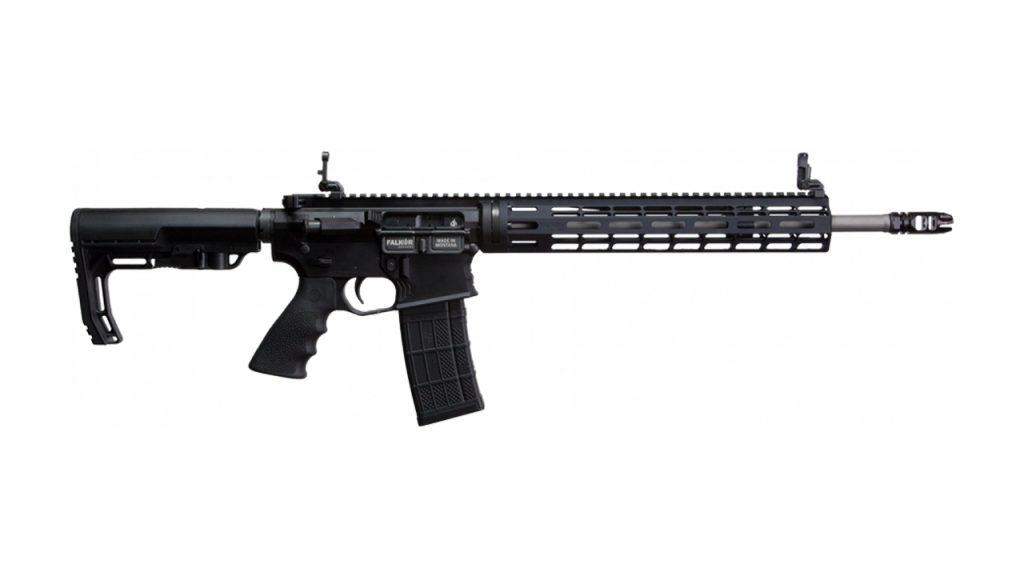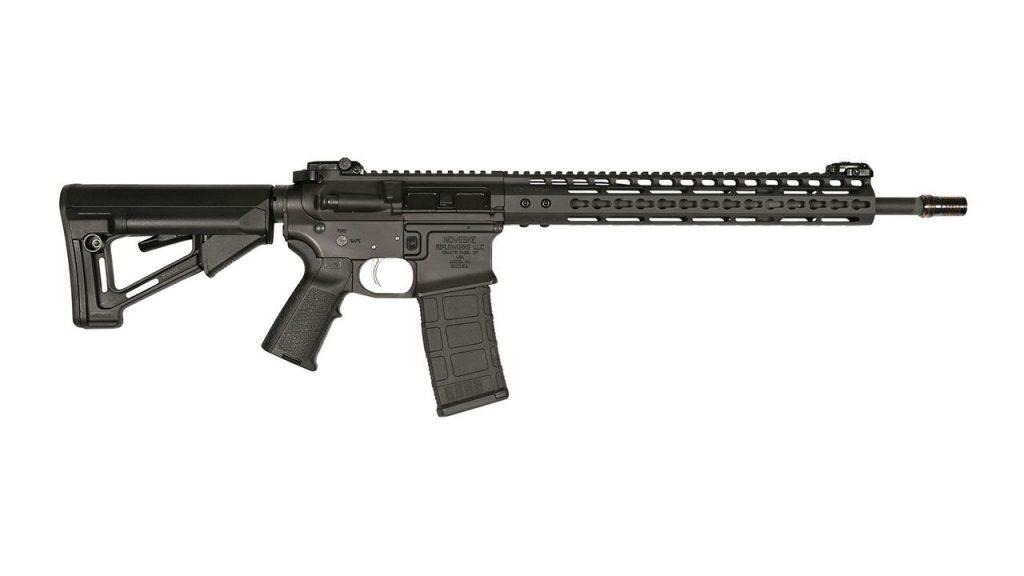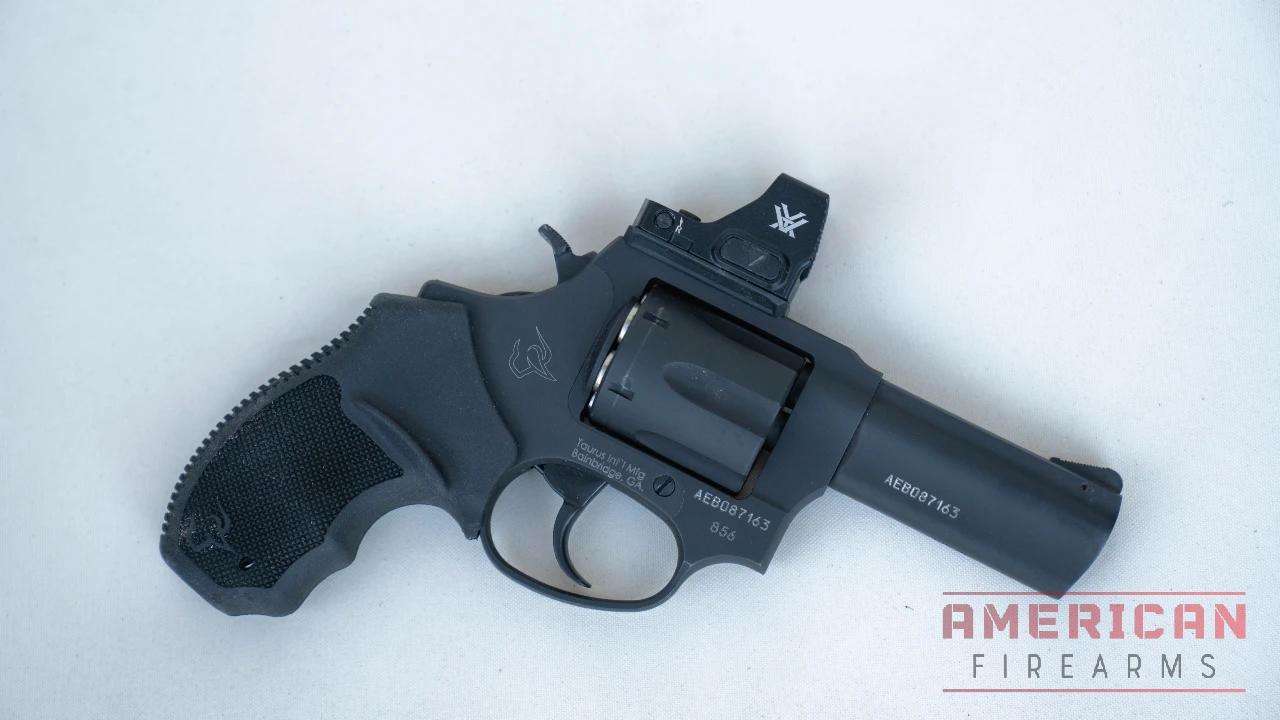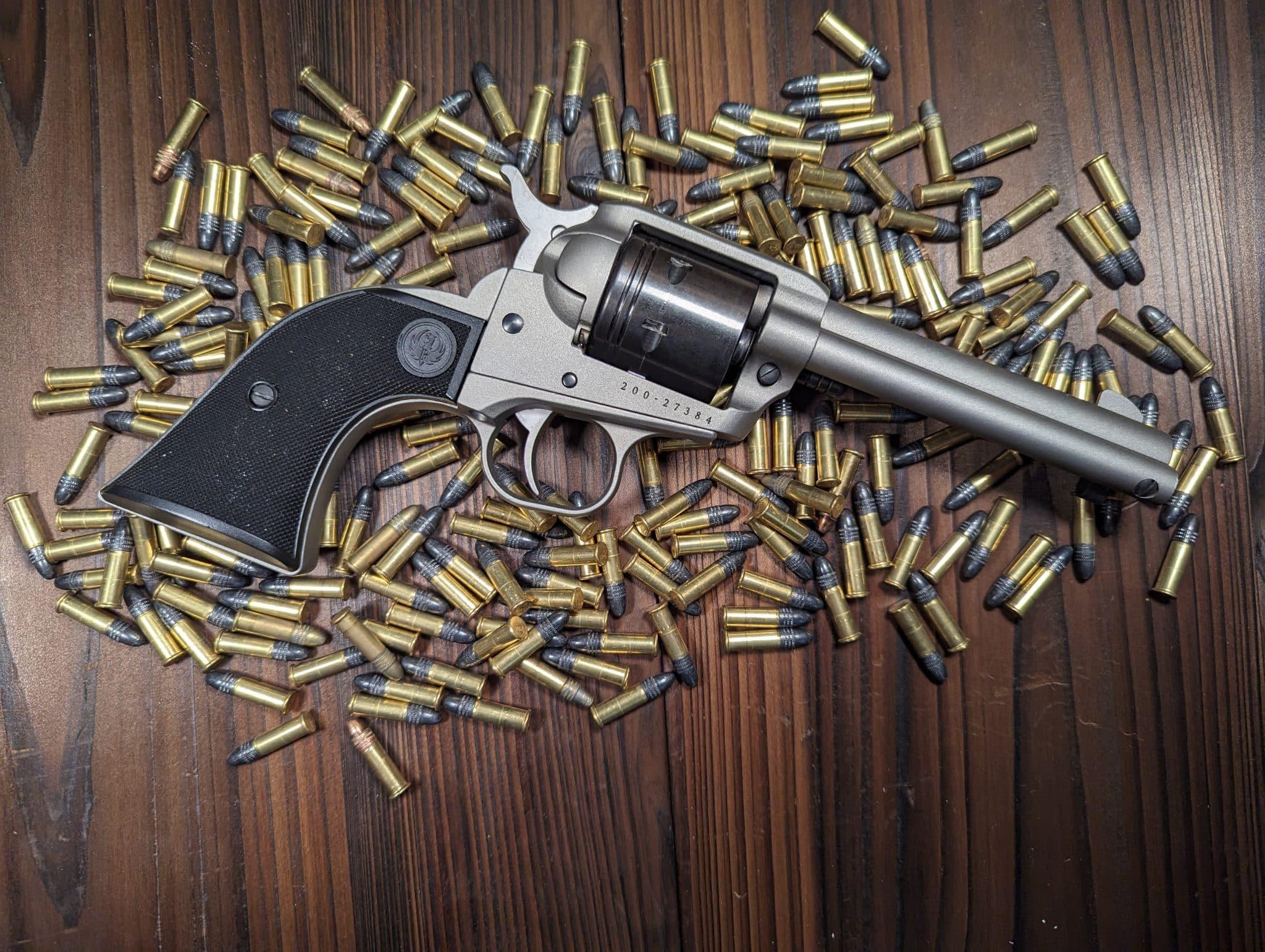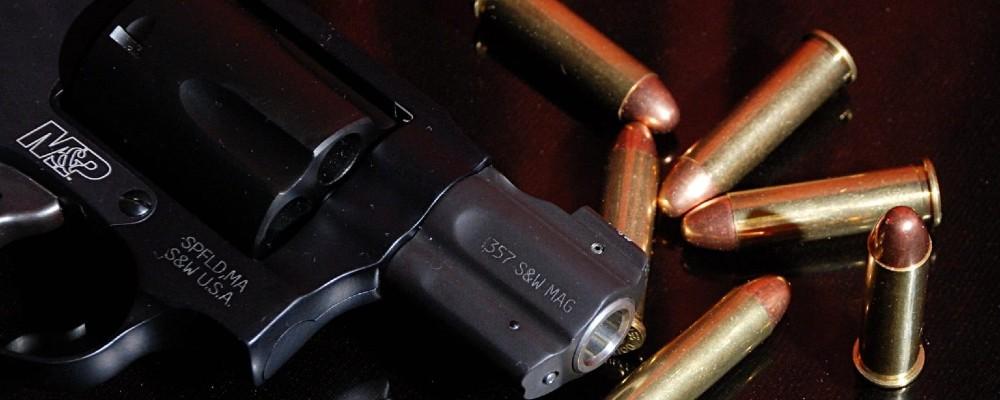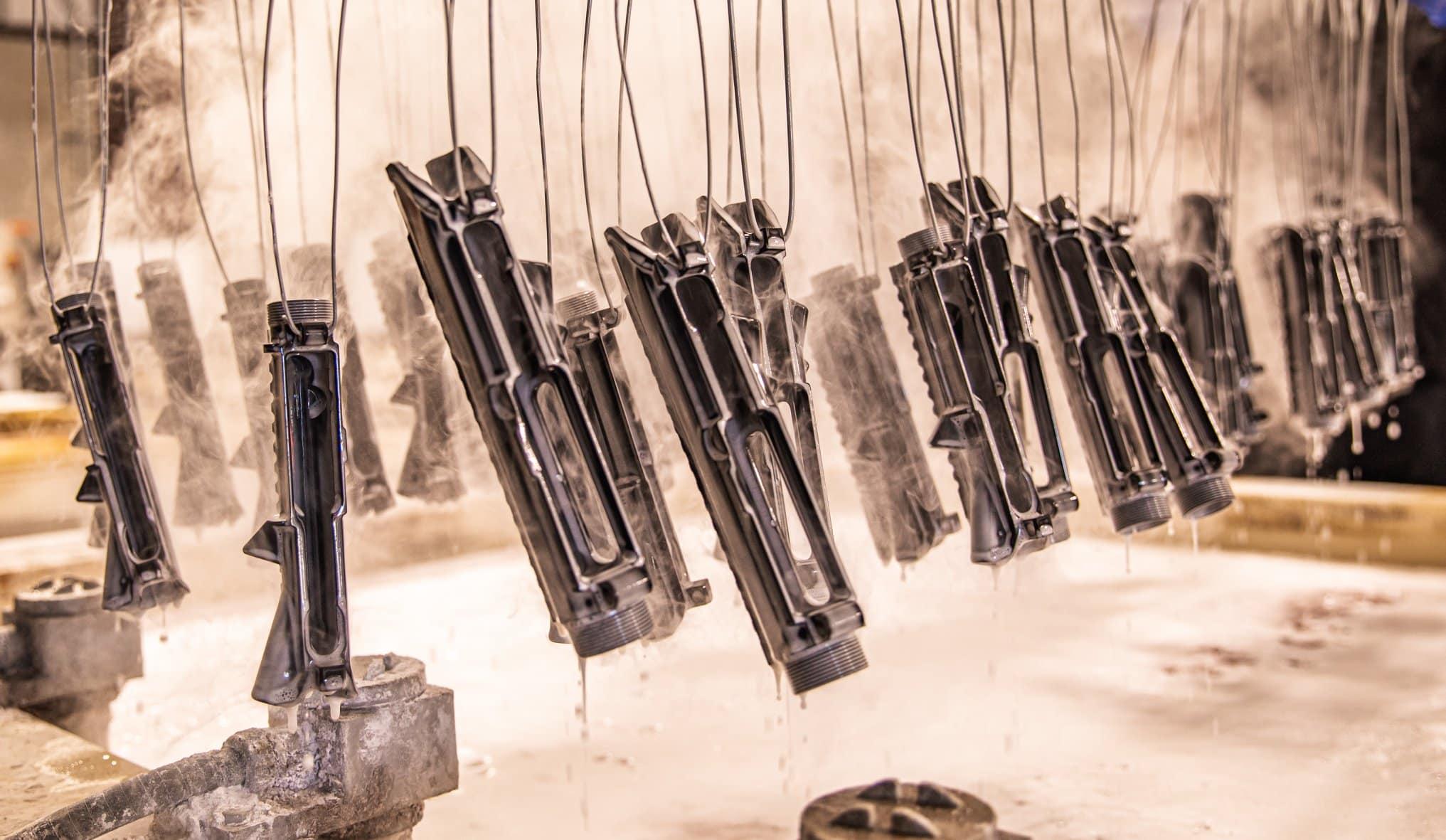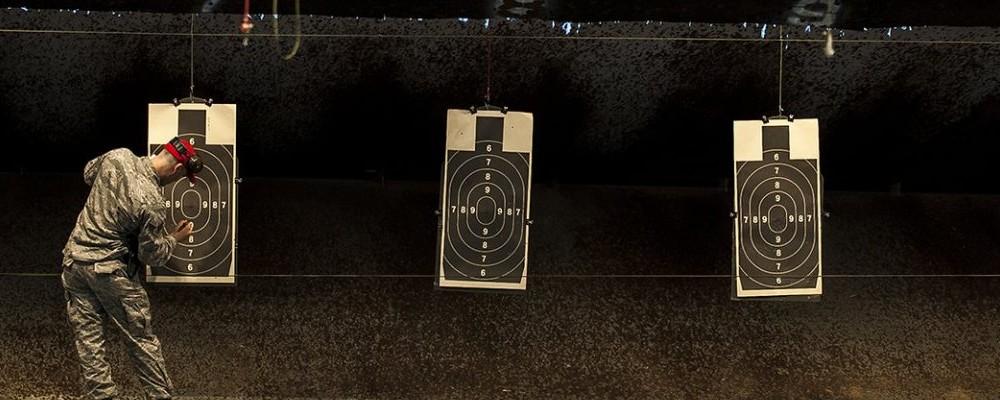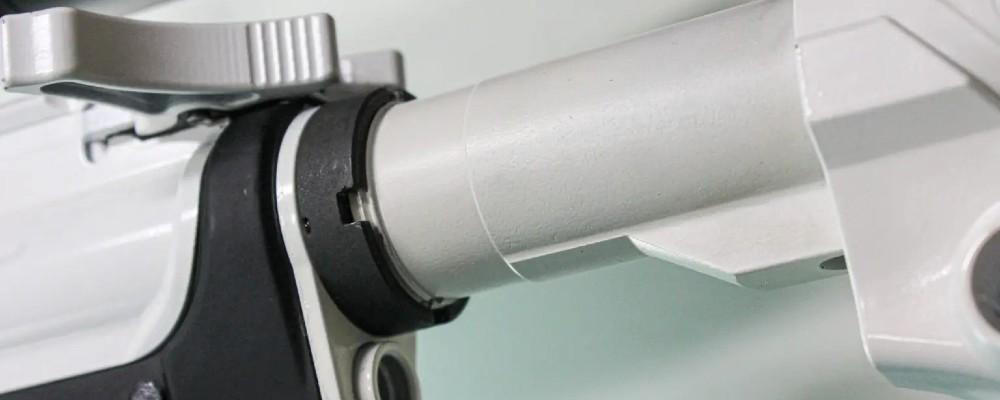Complete Recce Rifle Guide: Build, Buy, and Optimize Your Setup
Built on the reliable AR platform, the Recce Rifle is a versatile and precise firearm, which has evolved significantly over the years. Initially designed for military and law enforcement applications, it has become a popular choice among civilian shooters as well.
Written By
Michael Crites
Licensed Concealed Carry Holder
Reviewed by
Editorial Team
Learn About The Editorial Team
Share:
Products are selected by our editors. We may earn a commission on purchases from a link. How we select gear.
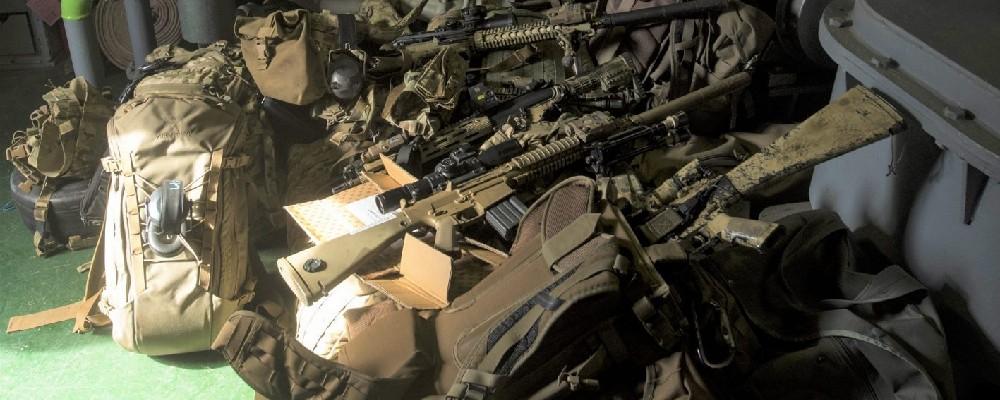
Updated
Jan 2026
This article is part of our Guide to Everything AR.
In general, the Recce (pronounced: “Wreck-E”) Rifle has been something of the Bigfoot or Loch Ness Monster of the AR-15 world for the past quarter-century. However, going past the basic “enhanced carbine” concept — theorized originally by the country’s most elite special operations commandos — the platform has graduated to a fully-evolved class of rifles.
Bringing their own mature sheet of characteristics with them, they offer today’s savvy firearms owner something that goes past the essential AR and on to something more exceptional: a multitool in modern sporting rifle format.
Below is my list of the best RECCE rifles for 2022. I list the best choices in terms of value, performance, design, and cost.
Click on the name to head to the product page, read reviews and check prices or skip ahead to the list of rifles.
In This Article
What is a Recce Rifle?
A Recce Rifle, short for “reconnaissance rifle”, is a versatile and precise firearm designed to excel in both reconnaissance missions and close-quarters combat. The term “Recce” originates from British military slang for “reconnaissance,” drawn from the rifle’s primary role in gathering intelligence and engaging targets at varying distances.
The Recce Rifle concept was born in the early 1990s, thanks to the innovative minds at the Naval Surface Warfare Center Crane Division (Crane), in collaboration with the US Army and SOCOM. The goal was to create a lightweight, accurate, and reliable platform that could serve the unique needs of reconnaissance teams. These teams required a firearm that was easy to carry, capable of close engagements, and yet provided the accuracy and range of a light sniper rifle.
Typically chambered in 5.56 NATO, a Recce Rifle often features a magnified optic, a free-floating rail, and a suppressor or high-efficiency flash suppressor. This combination allows for precision shooting at extended ranges while maintaining the maneuverability needed for close-quarters scenarios.
Over the years, the Recce Rifle concept has evolved, influenced by various military and civilian configurations. Despite these changes, the core requirements remain the same: a compact, accurate, and versatile firearm that can perform in both reconnaissance and close-quarters combat situations.
In modern times, the Recce Rifle has gained popularity in the gun world, becoming a term that signifies a specific set of specifications and parts. However, the true essence of a Recce Rifle lies not just in its components but in the skill of the shooter behind it. Whether built from scratch or purchased as a complete rifle, a Recce Rifle can be a reliable and accurate tool for hunting, target shooting, or self-defense.
A Recce Rifle is a specialized firearm designed to provide a lightweight, accurate, and reliable platform for reconnaissance and close-quarters combat. Its evolution over the years has solidified its place in both military and civilian arsenals, making it a popular choice for those seeking a versatile and effective rifle.
What to look for in a Quality Recce Rifle
1. 5.56 NATO or .223 Wylde Chambering
The fundamental truth of the long-range/short-range Recce rifle is that it excels at both “bad breath” distances and can reach out a little further than standard ARs. With that, the NATO gold standard 5.56×45 is good, with .223 Wylde being just a bit better.
Why Wylde? It allows the user to run larger pills with a better ballistic coefficient– such as 75- and 77-grain loads– while still functioning in the AR’s standard direct gas impingement action.
In this, bullet weight and optimizing the barrel twist rate to wring every bit of velocity are everything. Keep with a 1:7 or 1:8-inch twist on a good barrel with a solid reputation for being accurate.
2. 16 to 18-inch Barrel Length

The classic Recce rifle is intended to be as light as possible, enabling the recon rifle to be used for extensive patrolling, yomping, or rucking– situations– where every ounce added to the weight of the rifle and gear feels like a cinder block. Plus, you want to be able to maneuver down hallways and around barricades.
Keeping that in mind, the longest a Recce-style rifle should be is one that uses an 18-inch barrel (preferably 16s). Couple that with a durable but lightweight handguard system and an improved M4 stock, and you should be in the recon rifle sweet spot all day, rarely pushing past 35 inches overall length.
3. Under 9 lbs & Mid-Length Gas System
Weight, with optic, should not grow much past 8-pounds, or else you are getting into DMR territory.
A 16 to 18-inch barrel length, especially with a decent handguard to run interference, enables the user to rely on a mid-length gas system rather than a choppier carbine-length system.
This is ideal as the mid-length generates a smoother recoil impulse as a side effect of the longer dwell time, enabling the user to deliver more rounds on target rapidly.
4. Lightweight Optics
Don’t crowd the rail and run a huge piece of glass on your Recce. This is not a varmint or bench rest rifle. Keeping it low power with an absolute co-witness style of mounting, you will want something in the 1x-4x to 1x-8x magnification range that can be easily put into service at both close ranges (in 1x) and push out a little further when desired.
Today’s Low Power Variable Optic, or LPVO, glass selection has never been better. As a word of endorsement, the guys who are using Recce rifles/M27s/M38s for real on behalf of Uncle Sam have tapped the SIG TangoT6 and the Nightforce ATCR 1-8x for use with their firearms.
The Nightforce NXS 1-4x is right at a pound and very compact while still showing up with a quality sight picture and illuminated reticle when keeping it small.
Even going budget-friendly, a Vortex Strike Eagle 1-6x is a decent second focal plane scope that can be had for around $300. Keep in mind that precision shots at close range, where positive identification is no less critical, are just as crucial as at distance.
5. Steel Backup Iron Sights (BUIS)

When speaking to optics, things always tend to break or get lost (remember your dummy cord, especially on high-dollar glass, as it can help keep you from having an expensive aluminum stick in the field). Good backup iron sights are a must, with plastic Magpuls not considered to be good enough.
Go with Magpul’s Pro Steel series, LWRCs, Troy’s Micro HKs, or Folding Battles, or, if your optics accommodate it, the Daniel Defense A1.5 fixed series.
6. Purpose
A Recce rifle is genuinely a “do-anything” style of AR that is at home hunting medium game in the field, running and gunning on a 3-gun competition course, for carrying while on an over-the-horizon patrol, responding to an active shooter, or securing the perimeter in the zombie apocalypse.
Building your own recce rifle allows for a versatile platform suited for various combat scenarios, emphasizing reliability and lightweight features.
Keep to the mantra of being compact (no longer than an 18-inch barrel, no outsized PRS-style stocks), high-quality (good trigger– LaRue Tactical’s MBT-2S is only $80—optics, and upper), and rugged (no Wish.com/eBay mounts or questionable accessories) then the 500-yard sweet spot with a 5.56-fed AR is well within grasp. Of course, a reliable weapon light is essential for effective engagement in various lighting conditions, particularly in military and tactical scenarios.
How to Build Your Own Recce Rifle
Build your own
The recipe isn’t tough to come up with the ultimate lightweight rifle for a Recce Rifle setup. This means that rolling your own Recce is a real thing these days. This ranges from out-and-out clone build for the guys who like to have what the frogmen have, or as close to it to a more vanilla build that still hits the high notes.
Long story short, if you want to build your own perfect take on the Recce concept, do your homework and construct your rifle, then (and this is the hard part these days) find the ideal load that likes your build and works with it both at 25M and 500M.
So, what is a RECCE rifle again? (TLDR version)
In general, a RECCE rifle has the following characteristics:
- Chambered in 5.56×45 or .223 Wylde
- 16 to 18-inch barrel Government Profile barrel
- 1:7 or 1:8-inch twist
- Lightweight 1x-4x to 1x-8x optic
- Steel BUIS
- Under 9 lbs with glass
Let’s break this down.
Building a Recce rifle from the ground up gives you complete control over every component, letting you tailor the rifle to your specific needs and budget. Over the years, I’ve built more than a dozen Recce-style rifles for various applications, and I’ve learned that success comes down to understanding how each component contributes to the rifle’s overall mission.
The beauty of the Recce concept is its flexibility – there’s no single “correct” build, but there are smart choices that consistently deliver better results than others.
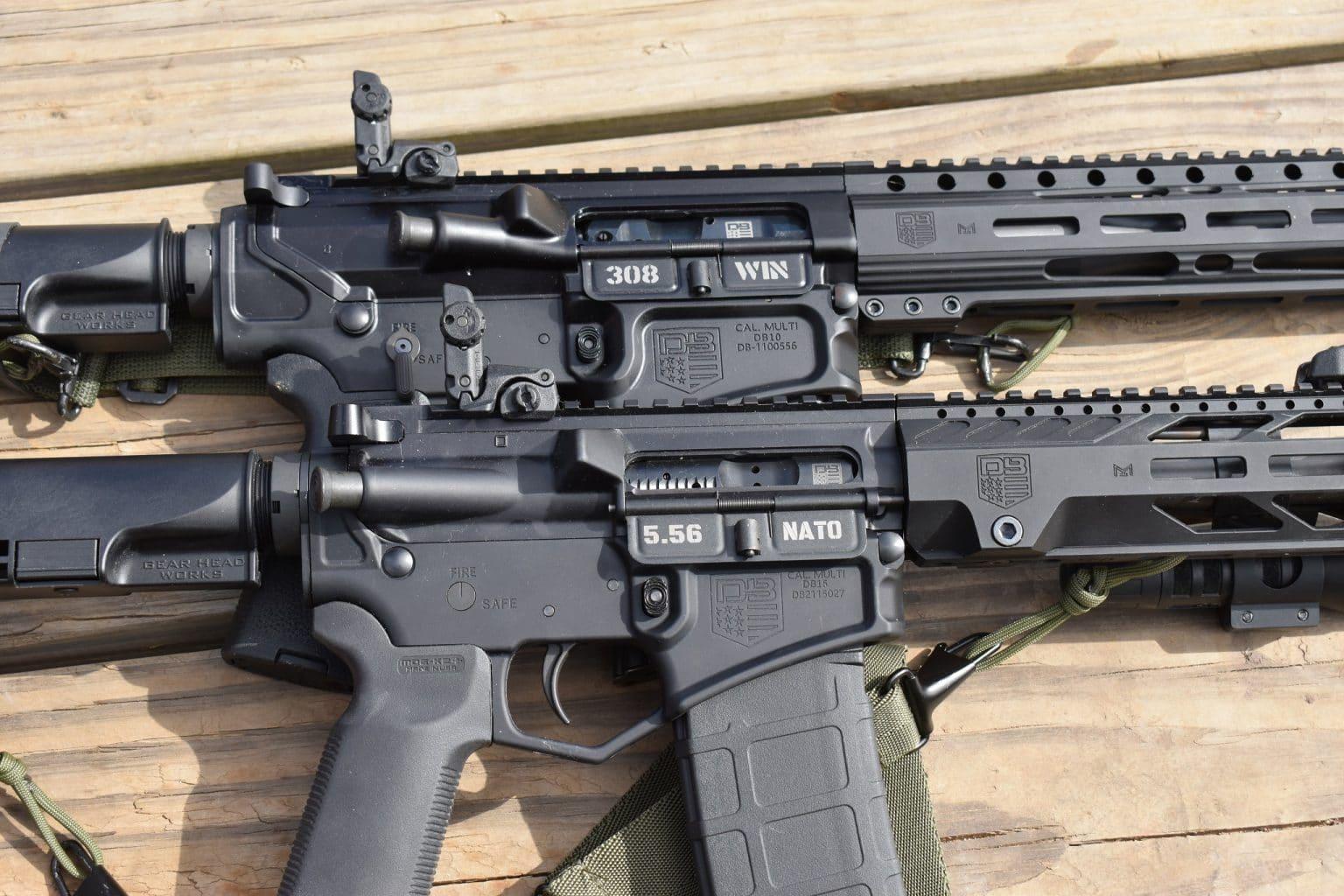
Starting with the Foundation: Upper and Lower Receivers
The receiver set forms the backbone of your build, and while it’s tempting to overthink this decision, the reality is that most quality forged receivers will serve you well. I’ve worked with everything from budget-friendly options to high-end billet sets, and the differences often come down to aesthetics and minor features rather than fundamental performance.
That said, some choices make more sense than others for a Recce-style build.
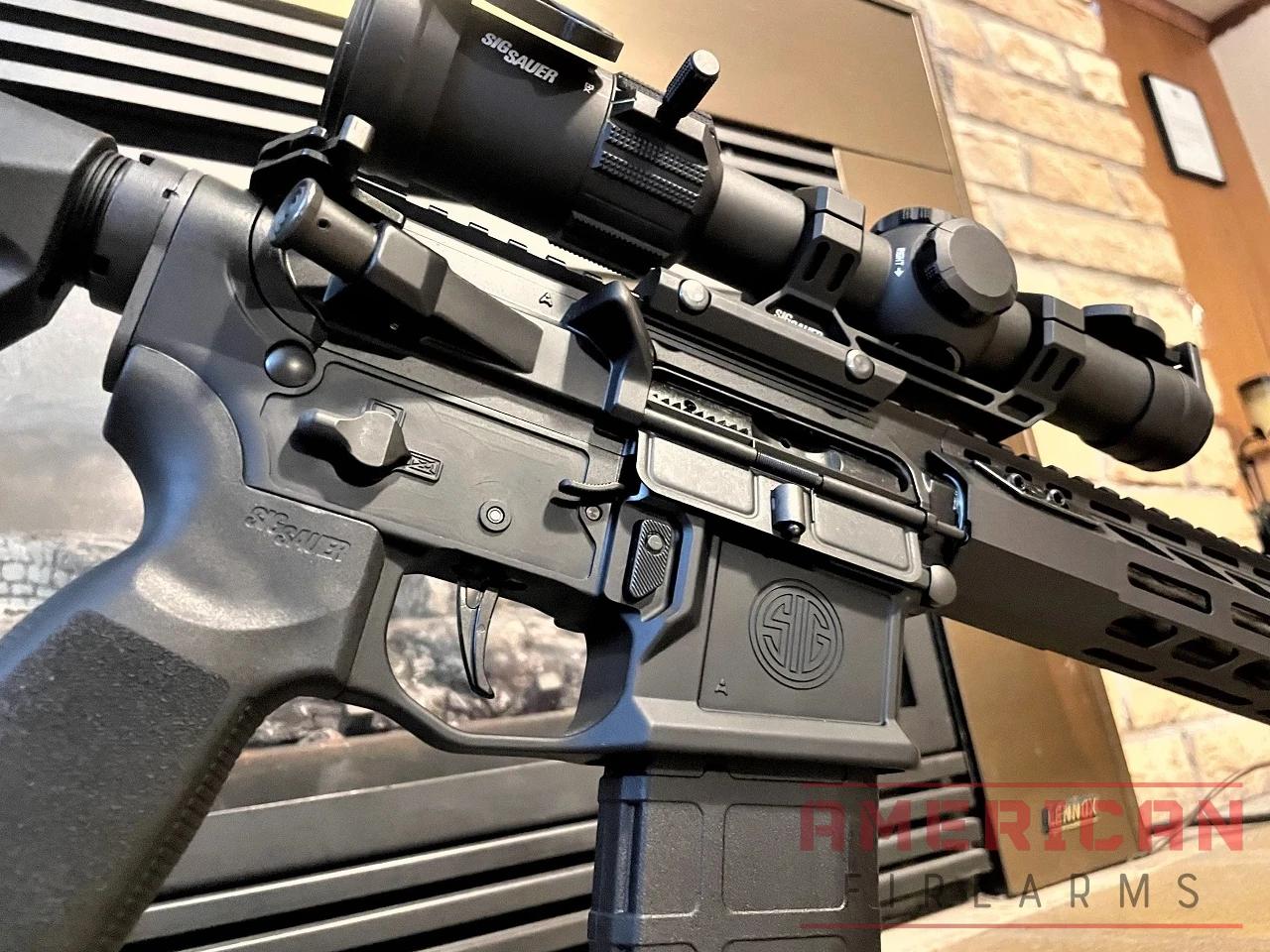
For the upper receiver, you want a forged 7075-T6 aluminum unit with a proper M4 feed ramp cut. The flat-top design is non-negotiable since you’ll be mounting an optic. I’ve had excellent results with Aero Precision M4E1 uppers, which feature a threaded barrel nut system that makes handguard installation straightforward. BCM uppers are equally solid and built to tighter tolerances than mil-spec requires.
If budget allows, the LMT MRP upper receiver offers a monolithic rail design that’s exceptionally rigid, though it limits your handguard choices.
The lower receiver is where you can save some money without sacrificing performance. A quality forged lower from Aero Precision, Anderson Manufacturing, or Palmetto State Armory will function identically to more expensive options once properly assembled.
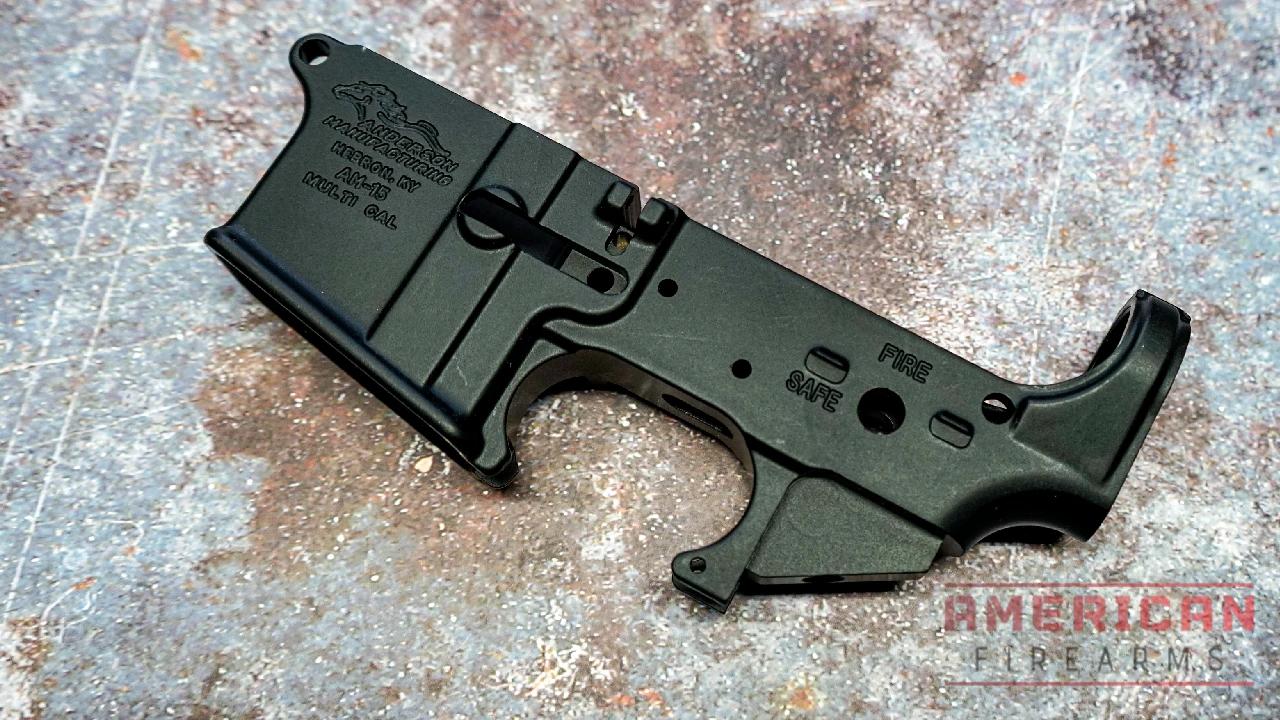
The differences show up in details like finish quality, roll marks, and features like integral trigger guards or flared magazine wells. For a Recce build, I typically stick with a standard mil-spec lower and spend the savings on better components that actually affect performance.
One consideration worth noting: if you’re building on a stripped lower, you’ll need to ensure the trigger pocket is properly dimensioned for whatever fire control group you’re installing. I’ve encountered a handful of lowers over the years with slightly out-of-spec pockets that caused trigger fit issues.
This is rare with reputable manufacturers but worth checking during assembly.
The Heart of the Rifle: Barrel Selection
The barrel is where you should focus your attention and budget. This single component has more influence on accuracy, reliability, and overall performance than any other part of the rifle.
For a Recce build, you’re looking for a barrel that balances accuracy, weight, and durability – typically a 16-inch mid-length gas system with a 1:7 or 1:8 twist rate.
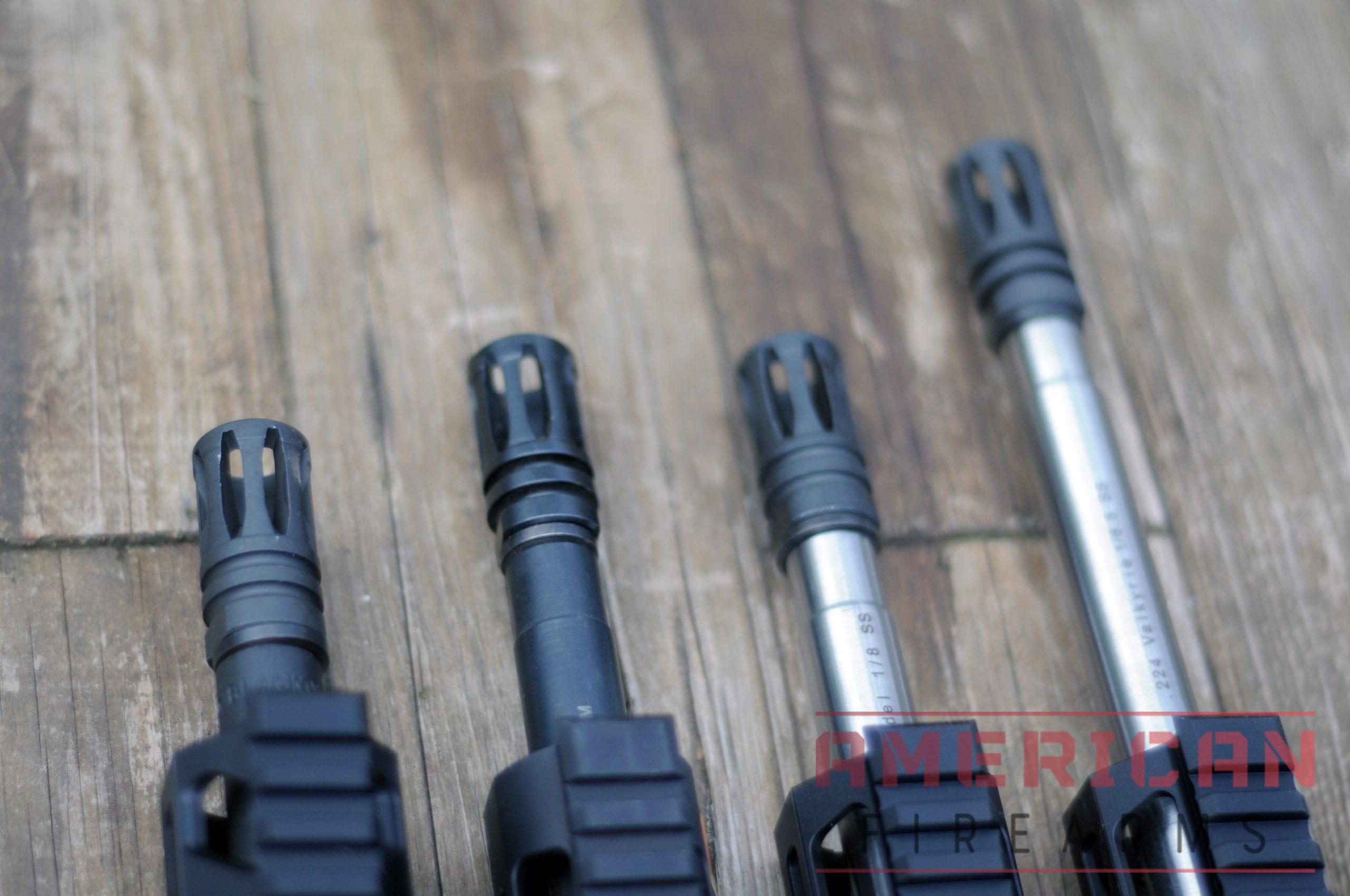
I’ve tested dozens of barrels over the years, and the differences between quality options are measurable but often subtle. A good chrome-moly vanadium barrel from a reputable manufacturer will typically shoot 1 to 1.5 MOA with quality ammunition. Stainless steel barrels can push that to sub-MOA, but they sacrifice some durability.
For a true Recce rifle that needs to perform across various conditions and maintain accuracy through higher round counts, I lean toward chrome-lined barrels despite the minor accuracy trade-off.
The FN cold hammer forged chrome-lined barrel remains my gold standard for this application. These barrels use the same M249 SAW barrel steel with double-thick chrome lining, and they’re exceptionally durable while maintaining very respectable accuracy. I’ve seen FN barrels consistently deliver 1.25 MOA across thousands of rounds without degradation. They’re not inexpensive, but the performance justifies the cost.
For those working within tighter budgets, Ballistic Advantage offers excellent value with their Premium and Hanson profile barrels. The Hanson profile uses a slightly tapered design that reduces weight while maintaining rigidity where it matters. I’ve built multiple rifles on BA barrels and consistently achieved MOA accuracy with 77-grain loads.
Criterion Barrels deserves mention for their hybrid contour designs that balance weight and heat dissipation effectively. Their barrels typically shoot in the 0.75 to 1 MOA range, making them ideal if accuracy is your top priority. The Criterion CORE series uses a nitrided finish that’s nearly as durable as chrome lining while maintaining the accuracy potential of stainless steel.
The gas system length matters more than many builders realize. A 16-inch barrel with a mid-length gas system provides noticeably smoother recoil impulse than carbine-length gas.
The longer dwell time allows for more gradual pressure curves, which translates to softer shooting and less wear on components. In my testing, mid-length systems also tend to be more reliable with a wider variety of ammunition, from light 55-grain loads to heavy 77-grain match ammo.
Twist rate deserves consideration based on your intended ammunition. A 1:7 twist stabilizes everything from 55-grain ball ammo up to 80-grain match bullets, making it the most versatile choice. A 1:8 twist works perfectly fine for the 69 to 77-grain range most shooters use and was the original specification for early Recce rifles.
I wouldn’t build a Recce with anything slower than 1:8, as you’ll be limiting your ammunition options for longer-range work.
Bolt Carrier Groups: Where Reliability Lives
The bolt carrier group sees more stress than any other component in the rifle, and this is not the place to cut corners. I’ve seen more malfunctions traced back to poor-quality BCGs than all other causes combined. For a Recce rifle that needs to run reliably across varied conditions, invest in a properly manufactured and tested bolt carrier group.

The bolt itself should be Carpenter 158 steel that’s been both high-pressure tested (HPT) and magnetic particle inspected (MPI). These processes catch material defects that could lead to catastrophic failure. Many budget BCGs are only batch tested, meaning a few bolts from each production run get inspected while the rest go through without individual verification. For a hard-use rifle, individual testing is worth the extra cost.
I’ve had consistently good results with Brownells-branded BCGs, which offer individual HPT and MPI testing at reasonable prices. The bolt is properly heat-treated and shot-peened for durability, and the gas key is staked according to Colt’s technical data package specifications. For a step up, the Colt-manufactured BCG remains a solid choice if you can find one at a fair price.
The carrier itself should be properly phosphated or nitrided, with chrome lining inside the carrier bore. This chrome lining reduces friction and carbon buildup, making cleaning easier and extending the time between required maintenance. I’ve run several BCM bolt carrier groups that use their proprietary coating, and they’ve performed flawlessly through tens of thousands of rounds with minimal cleaning.
One detail worth checking: the gas key staking. Proper staking involves deforming the carrier material around the gas key screws to prevent them from backing out under fire. I’ve seen factory BCGs with inadequate staking that developed gas leaks after a few thousand rounds. Before installing any BCG, inspect the staking – you should see clear material deformation around each screw head.
Handguards: Form Follows Function
The free-float handguard serves multiple purposes on a Recce rifle. It isolates the barrel from external pressure, provides mounting points for accessories, and contributes significantly to the rifle’s handling characteristics through weight and balance.
The market offers an overwhelming variety of options, but for a Recce build, you want something lightweight, rigid, and long enough to provide a comfortable shooting platform without unnecessary bulk.
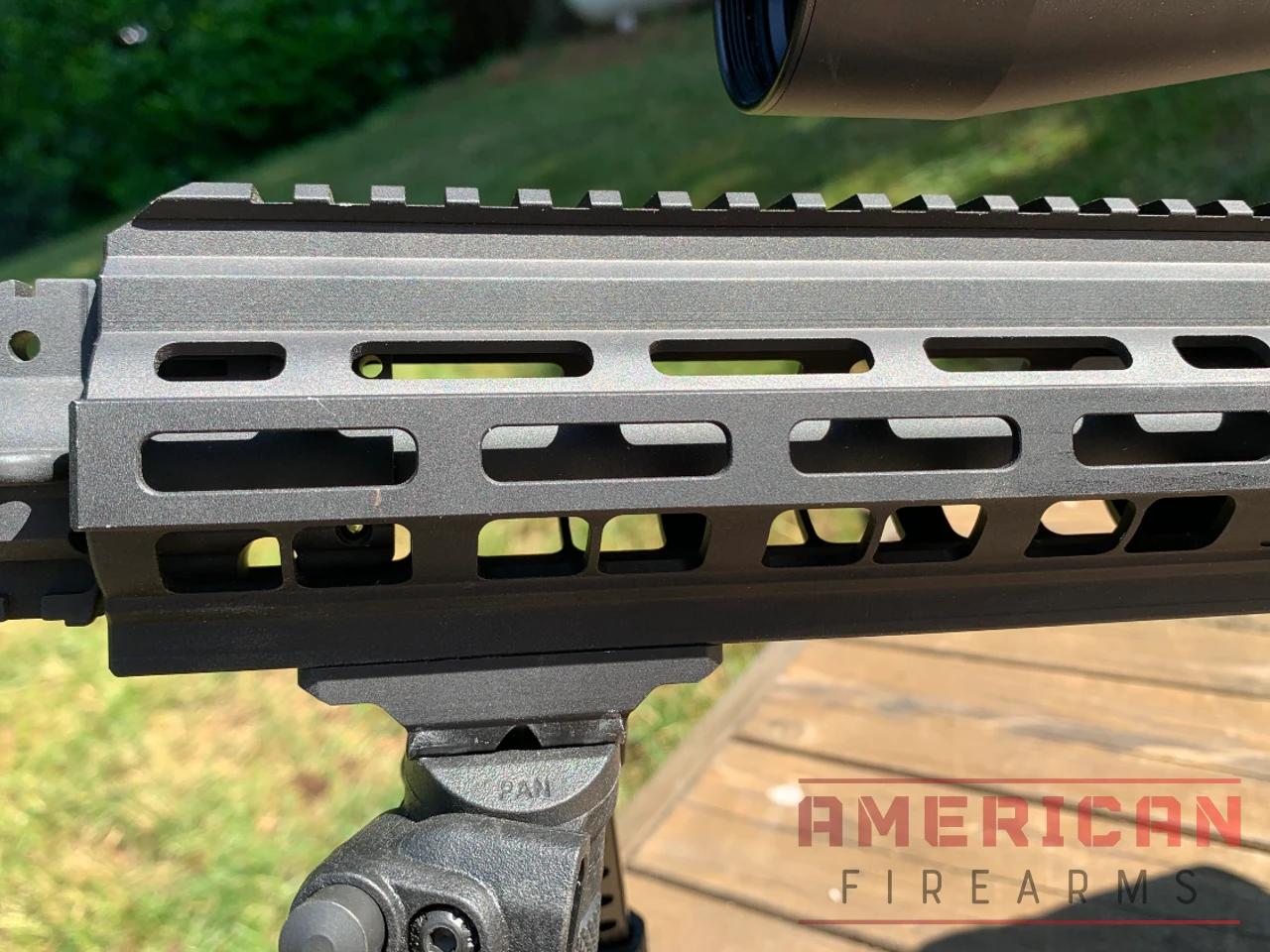
I’ve gravitated toward M-LOK handguards in recent years for their weight savings over quad rails while maintaining plenty of attachment options. A 13 to 15-inch M-LOK rail on a 16-inch barrel provides an excellent grip length without extending past the muzzle device. This length allows you to use modern thumb-over-bore shooting techniques while keeping the rifle maneuverable.
BCM’s MCMR (M-LOK Compatible Modular Rail) series hits the sweet spot for most Recce builds. These rails are lightweight, exceptionally rigid despite their slim profile, and use a straightforward barrel nut installation that doesn’t require precise timing. I’ve built multiple rifles using BCM rails, and they’ve handled hard use without shifting zero or showing wear.
For those seeking maximum rigidity, the Geissele Super Modular Rail (SMR) MK16 offers impressive stiffness in a relatively lightweight package. The MK16 uses Geissele’s proprietary barrel nut that incorporates the gas block mounting, which some builders prefer for the added security. These rails run a bit heavier than BCM’s offerings but provide rock-solid mounting for accessories like bipods without any flex.
Midwest Industries offers excellent value in their Combat Rail series, providing solid lockup and good build quality at a lower price point than BCM or Geissele. I’ve used MI rails on several budget builds and found them perfectly adequate for the task, though they don’t quite match the refined feel of the premium options.
Whatever handguard you choose, ensure it uses a robust mounting system. Cheap handguards often rely on minimal contact points with the barrel nut, leading to shifts in zero when accessories are mounted or when the handguard takes a hard impact. Quality rails distribute clamping force around the entire circumference of the barrel nut for maximum stability.
Triggers: The Interface That Matters
The trigger is your primary interface with the rifle, and upgrading from a standard mil-spec trigger to a quality match or enhanced trigger transforms the shooting experience. For a Recce rifle, you want a trigger that’s crisp, consistent, and reliable across varied conditions without being so light that it becomes a safety concern.
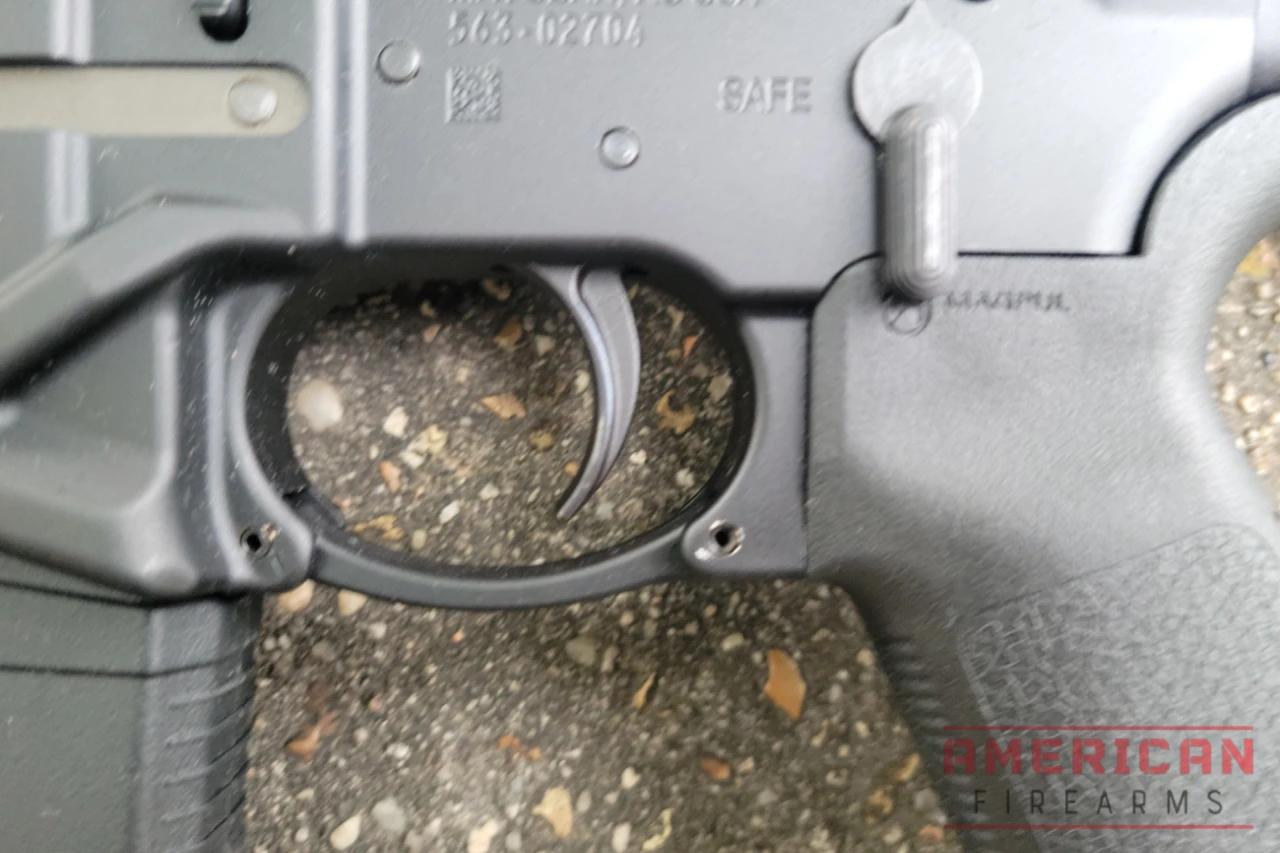
I’m a strong advocate for two-stage triggers in precision carbines. The two-stage design provides a distinct wall before the break, giving you better control during the final press. This design shines when shooting from awkward positions or under time pressure, as it reduces the chances of jerking the trigger during the break. The original Mk12 SPR used Knights Armament two-stage triggers, and that choice was validated by years of field use.
The Geissele Super Semi-Automatic (SSA) trigger set the standard for enhanced AR triggers and remains my default recommendation. With a 4.5-pound total pull weight split between a 2.5-pound first stage and 2-pound second stage, it provides excellent control without being so light that it causes safety concerns. I’ve run SSA triggers through multiple training courses and competitions, and they’ve performed flawlessly in rain, dust, and mud.
For budget-conscious builders, the LaRue Tactical MBT-2S offers remarkable performance at around $80. This trigger provides a feel very similar to the Geissele at half the price. I’ve installed several MBT-2S triggers in training rifles, and while they don’t have quite the same refined feel as the Geissele, they’re 90% of the way there for 50% of the cost.
Single-stage triggers have their place, particularly for shooters coming from bolt-action backgrounds who prefer a simple, direct break without a distinct first stage. The Geissele SD-E (Super Dynamic Enhanced) offers a light single-stage break around 3.5 pounds that works well for competition use. However, for a true Recce rifle that might see duty or defensive use, I prefer the added control of a two-stage design.
One caution about extremely light triggers: while a 2-pound competition trigger feels wonderful on the range, it can be a liability in the field. For a Recce rifle that needs to be ready for varied situations, I wouldn’t go lighter than 3.5 pounds total pull weight. The marginal accuracy advantage of a lighter trigger isn’t worth the increased risk of an unintentional discharge in rough handling or cold weather conditions.
Stocks: Balancing Adjustability and Stability
The stock choice impacts both the rifle’s handling and your ability to achieve a consistent cheek weld. For a Recce rifle, an adjustable stock makes more sense than a fixed rifle stock despite the slight rigidity advantage fixed stocks offer.
The ability to adjust length of pull for different shooting positions, body armor, or seasonal clothing matters more than the minimal accuracy difference between a quality adjustable stock and a fixed stock.
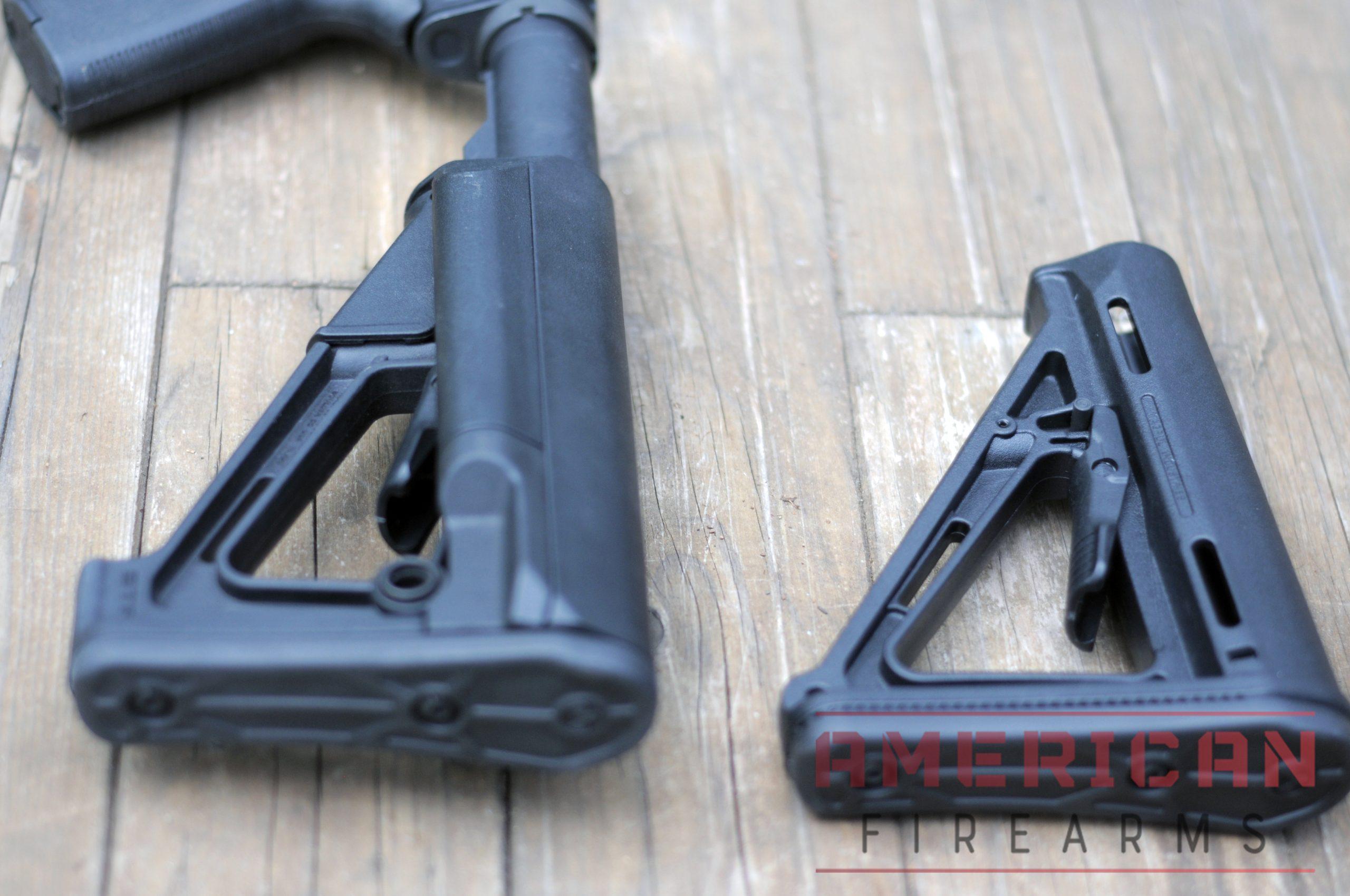
The B5 Systems SOPMOD Bravo has become my go-to stock for most Recce builds. This stock provides excellent lockup on the buffer tube with minimal wobble, features QD sling attachment points on both sides, and includes a storage compartment for small items like batteries. The cheek weld surface is comfortable but not so thick that it raises your sight line excessively. I’ve used these stocks in multiple rifles, and they’ve proven durable through hard use.
For shooters who prioritize absolute rigidity, the Magpul UBR Gen 2 essentially turns an adjustable stock into a fixed stock at each position. The UBR uses a captured buffer and spring system with robust locking mechanisms that eliminate any play once set.
These stocks are notably heavier than standard carbine stocks – adding about 8 ounces – but they provide an exceptionally solid shooting platform. I’ve got one rifle with a UBR, and the added weight actually helps balance a longer, heavier handguard setup.
Magpul’s CTR (Compact Type Restricted) and STR (Storage Type Restricted) stocks offer good value with their friction lock system that reduces wobble on the buffer tube. The STR adds storage compartments and a wider cheek weld surface compared to the CTR. Both are reliable, lightweight options that work well for most applications.
Whatever stock you choose, verify it locks up tight on your buffer tube. Excessive wobble creates an inconsistent cheek weld position, which translates directly to inconsistent accuracy. Quality stocks should have minimal lateral movement when properly installed.
Buffer Systems: The Unsung Hero
The buffer and spring system might seem mundane, but it significantly affects how the rifle shoots and cycles. For a 16-inch mid-length gas system, the standard carbine buffer and spring work adequately, but upgrading to a rifle-length spring and appropriate buffer weight noticeably smooths the recoil impulse.
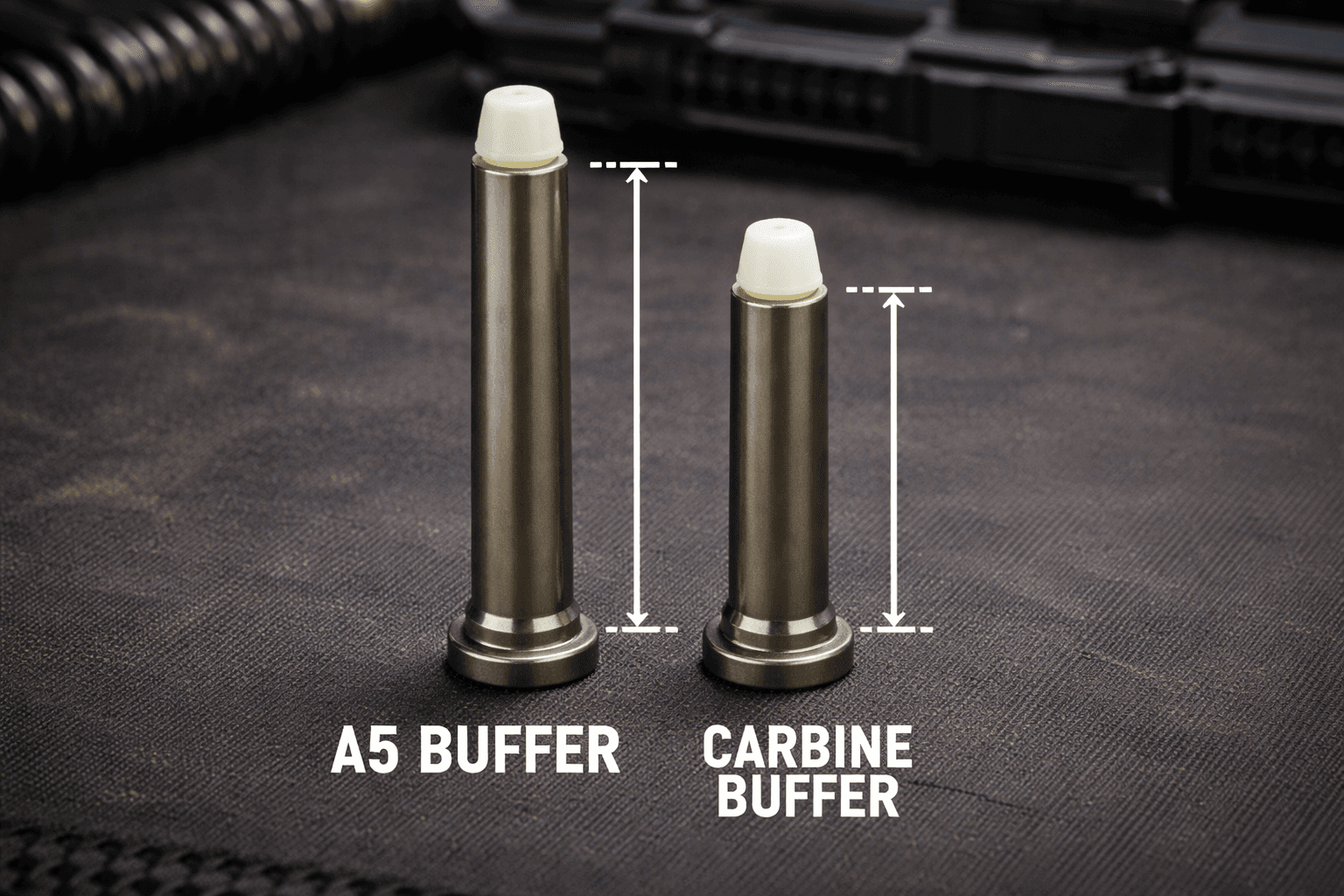
I’m a strong proponent of the VLTOR A5 buffer system for Recce rifles. This system uses a rifle-length spring with a slightly longer buffer tube extension and specialized buffer weights. The A5 system provides the smoothest recoil impulse I’ve tested in an AR-15, reducing felt recoil and muzzle rise noticeably compared to standard carbine systems. The longer spring also seems to be more reliable across varied ammunition types.
For standard carbine buffer systems, I typically start with an H or H2 buffer weight rather than the standard carbine buffer. The added weight slows the bolt carrier velocity slightly, which reduces felt recoil and impact on the buffer tube. With a mid-length gas system and quality ammunition, an H2 buffer usually provides optimal performance. If you’re running a suppressor, you may need to adjust buffer weight to compensate for the added back pressure.
The buffer spring itself deserves attention. Standard mil-spec springs work fine for thousands of rounds, but they eventually take a set and lose tension. The Sprinco Blue spring or similar enhanced springs maintain tension better over time and are worth the modest investment. I replace buffer springs every 5,000 to 10,000 rounds as preventive maintenance, even if they haven’t failed.
Muzzle Devices: Managing Recoil and Flash
The muzzle device choice involves trade-offs between flash suppression, recoil reduction, and concussion. For a Recce rifle, I prioritize flash suppression first, then recoil reduction, then low concussion. A rifle that blinds you with muzzle flash in low light or announces your position with a fireball isn’t serving its reconnaissance role effectively.
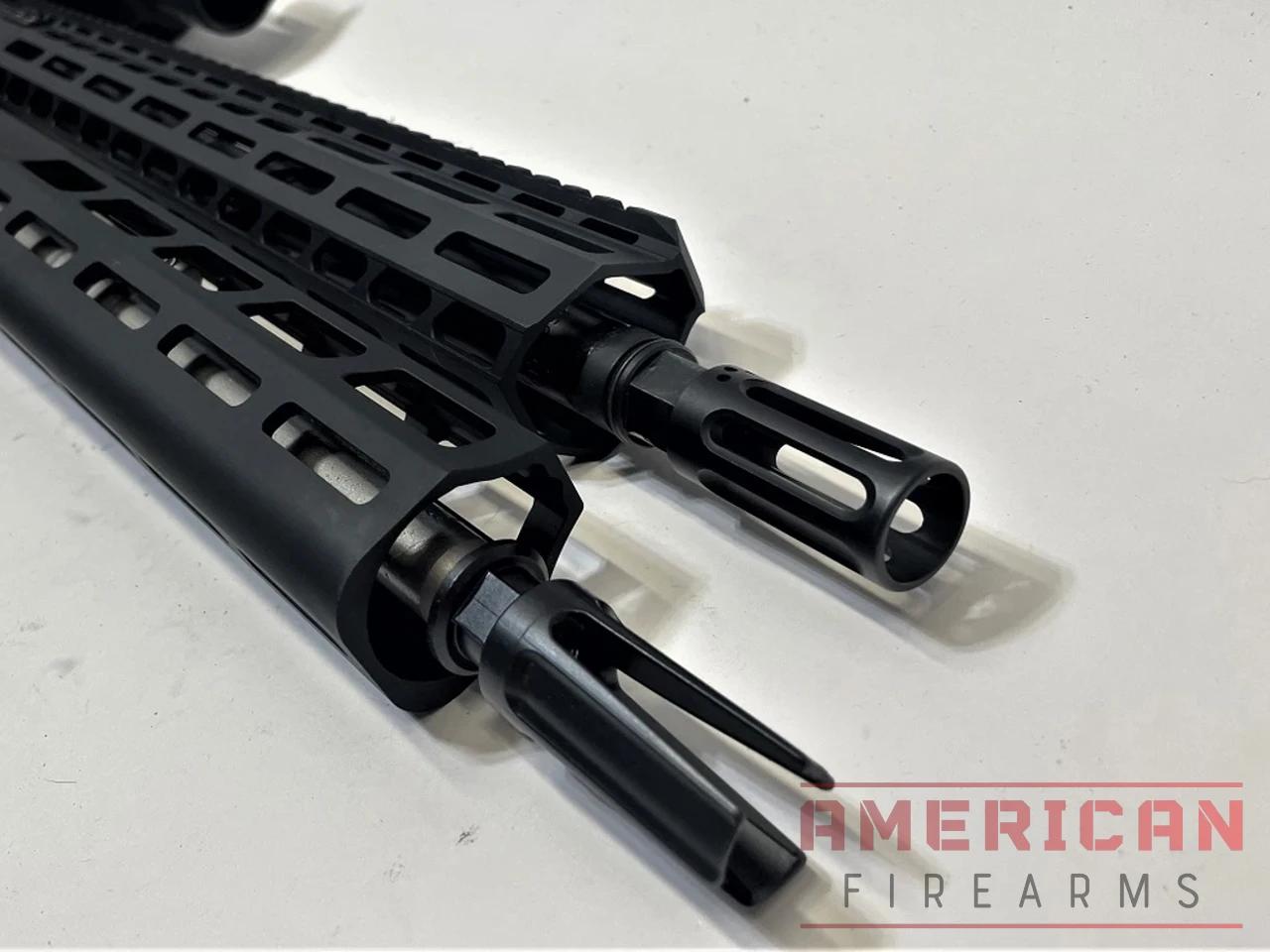
The Surefire 3-Prong Flash Hider strikes an excellent balance for Recce applications. This device provides very effective flash suppression while offering moderate recoil reduction and reasonable concussion levels. It’s also compatible with Surefire suppressor mounting systems if you plan to run a can. I’ve used the Surefire 3-prong on multiple rifles, and it’s become my default choice for do-everything carbines.
For those prioritizing recoil reduction, the Dead Air Brake offers significant muzzle control and doubles as a suppressor mount for Dead Air cans. The downside is noticeable concussion and louder report for the shooter and anyone nearby. I’ve got one rifle set up with a Dead Air Brake, and while it shoots flat, it’s not pleasant at an indoor range.
If you’re primarily shooting on static ranges where flash suppression matters less, a compensator like the VG6 Gamma provides excellent recoil reduction at a budget price point. The Gamma noticeably reduces muzzle rise and felt recoil, making follow-up shots faster. The trade-off is increased concussion and flash compared to dedicated flash suppressors.

For suppressor users, ensure your muzzle device is compatible with your suppressor mounting system. Most modern QD suppressor mounts use proprietary flash hiders or brakes as their mounting interface.
Switching between different suppressor systems becomes expensive when you need to change muzzle devices on multiple rifles.
Bringing It All Together
Building a Recce rifle from components allows you to create exactly the rifle you need for your intended use. The key is understanding how each component contributes to the rifle’s overall mission and making informed choices based on your priorities.
A competition-focused Recce might prioritize a lighter barrel and trigger over durability, while a hard-use field rifle trades a bit of accuracy potential for bombproof reliability.
In my experience building and testing these rifles, the most important components to prioritize are the barrel, bolt carrier group, and trigger – in that order. These three components have the most direct impact on accuracy, reliability, and shootability.
Quality receivers, handguards, and stocks matter, but the differences between good options are less dramatic than the differences between good and mediocre barrels or triggers.
The complete component selection process might feel overwhelming at first, but start with a clear purpose for the rifle and make choices that support that purpose. Whether you’re building a lightweight patrol rifle, a precision-oriented carbine for competition, or a do-everything rifle for varied applications, understanding these components and their trade-offs lets you build the Recce rifle that best serves your needs.
In the next sections, we’ll dig into optics selection, ammunition choices, and the accessories that complete your Recce setup.
But get these core components right, and you’ll have built a solid foundation for a rifle that serves you well for thousands of rounds and years of use.
Recce Rifle Reviews
1. Most Options: BCM Recce-16
Bravo Company Manufacturing (BCM) has been striving to corner the market on commercially available off-the-shelf lightweight and accurate Recce Rifles, currently marketing no less than nine models labeled as such.
All BCM Recce-16s feature 16-inch barrels with either a 1:7 or 1:8 twist rate, have a full-length top Pic rail, use a mid-length gas system, weigh in along the 5.8- 6.5-pound range, and come standard with BCM Gunfighter series furniture and handguards.
2. Centurion MK12
Centurion Arms has the “Crane Spec Mod 1” variant of the MK12, which includes a 1:7 twist, 18-inch stainless barrel with a 12-inch quad-rail handguard, and fixed A2 style buttstock.
Offered with either KAC or PRI iron sights on the Pic rail, the MK 12 comes standard with Centurion’s 2-Stage Advanced Sniper Trigger (AST), although you can opt for a KAC for that as well.
While a skosh on the heavy end of the Recce rifle spectrum, the rifle is as close as you can get to a “fresh from the armory” MK12. For those just looking to upgrade their own lower, Centurion also sells a complete MK12 upper receiver.
3. Daniel Defense MK12
Using a gas block built to Crane’s original specs for USSOCOM, along with an 18-inch stainless steel cold-hammer forges barrel and 12-inch free-floating Picatinny quad rail, Daniel Defense has a regular MK12 clone that still runs 7~ pounds and will fit inside a 35-inch box.
Shipping with a their Mil-Spec CNC machined upper from 7075-T6 aluminum, and a Geissele SSA 2-stage trigger already installed, the only gear you’re missing is a bipod and the right optic to be very, very close to a top-notch Recce rifle.
4. Falkor Recce 16
Falkor Defense has trended a bit more towards precision that maneuvers on their Recce 16 series, using a 16-inch PROOF stainless steel 1:8 twist barrel with a longer than typical 14.6-inch MLOK free floated handguard.
The trigger is one of Geissele’s 3.5-pound Super Dynamic 3-Gun models, while the BCG is nitrided. All this rides on billet receivers with ambi mirrored surface controls making it southpaw friendly. Still, the carbine shrinks down to 33.5-inches overall with the collapsible Misson First minimalist buttstock, and the whole thing is under 6.6 pounds.
5. Noveske Light Recce
Built around a 1:7 twist 16-inch chrome-lined barrel made from the M249 machine gun barrel steel with a heavy chrome lining, the Noveske Light Recce model uses its own in-house 11-inch free-float handguard rail system and a Magpul STR stock.
Weight is just over 7-pounds, and for those looking to drop a little bit more of that, Noveske also sells a 14.5 Recce rifle made with the same M249 steel that reaches non-NFA length with a pinned and welded muzzle device.
History of the Recce Rifle
The exact origin of the “Recon” (or “Recce Rifle” as the Brits say) is, as with all gun culture, slightly vague. What is known is that the original RECCE rifle concept came from the U.S. Navy’s Special Warfare community: namely the SEALs and their supporting military team armorers.
The gun was developed as a jack of all trades to bridge the gap between the standard frogman small arms of the 1990s (the M4 Carbine/M16A2 Rifle in 5.56 NATO with iron sights or primitive red dots that were good for about 300 yards, or the even shorter-ranged Hecker & Koch MP5 9mm submachine gun) and a favorite of SEAL snipers — the accurized M14 rifle in 7.62 NATO.
Early recce rifles were the initial adaptations and modifications made to these standard military firearms, incorporating high-quality optics and match-grade barrels to enhance their versatility and precision for reconnaissance missions.

In short, what the military needed was a carbine-sized weapon that could clock-in shooting accurate shots in the hands of a skilled marksman out to 400-500 yards or so, and still be highly maneuverable to provide greater lethality in the style of closed-quarters battle in tight areas familiar to commando-type military units: raiding buildings, boarding and securing ships at sea, and fighting in complex urban areas such as alleyways and sewers.
This meant that, despite the tendency to go for a 20- or 24-inch heavy-barrel, such as seen on DCM competition rifles, the gun still had to be “recon” or “recce” friendly insomuch as the operator was to deploy it after fast-roping or helo-casting out of a low-flying chopper at Zero-Dark-Thirty, or inserted via a small boat, parachute or military submarine.
So, in the end — when it comes to the SEAL recon rifle — the shorter the barrel, the better.
As described by Navy SEAL Kyle Defoor, as far back as 2010:
“The original, whatever you want to call them- Recces, SPRs, MK 12s (we usually just say ‘sniper M4’) had a 16-inch barrel, Leupold 2.5-10, and a PRI foregrip. They were first used operationally in ’93 in Somalia by our guys that were attached to our Southern brethren.”
Since then, the Recce rifle concept has been continually developed over the past 30 years, with the Navy ordering small batches of aftermarket barrels and match-grade parts to update their rifles in-house.
Originally the rifles were built by the armorers of the secretive Naval Surface Warfare Center’s Crane Division (or NSWC Crane) in Indiana under small contracts (less than$7.5 million each to fly under the DOD’s daily media reporting threshold), and these Crane RECCEs have been taken out over time — replaced with Colt and Lewis Machine & Tool (LMT) for stocks; Douglas, Knights Armament and Lija for barrels– later optimized for the new Mk 262 cartridge, which uses a heavier 77-grain bullet; ALG, Daniel Defense, LaRue Tactical and LWRC for handguards and rails; Troy for backup irons, Geissele or KAC triggers; and Leupold, Nightforce and Trijicon for optics.
All this was developed on stock select-fire M-16A1 lowers, of which the Navy had thousands on hand, with some dating back to the 1960s.
The basic rifle remained the same: a light but accurate barrel in the 14.5-to-18-inch range, a free-floating handguard, quality trigger, a flattop upper receiver with a Pic rail system for a low-power optic, a practical combat sling, and a lightweight folding bipod. Ideally, they are capable of 400 yards or more with basic issue ammo and a 30-round STANAG magazine.
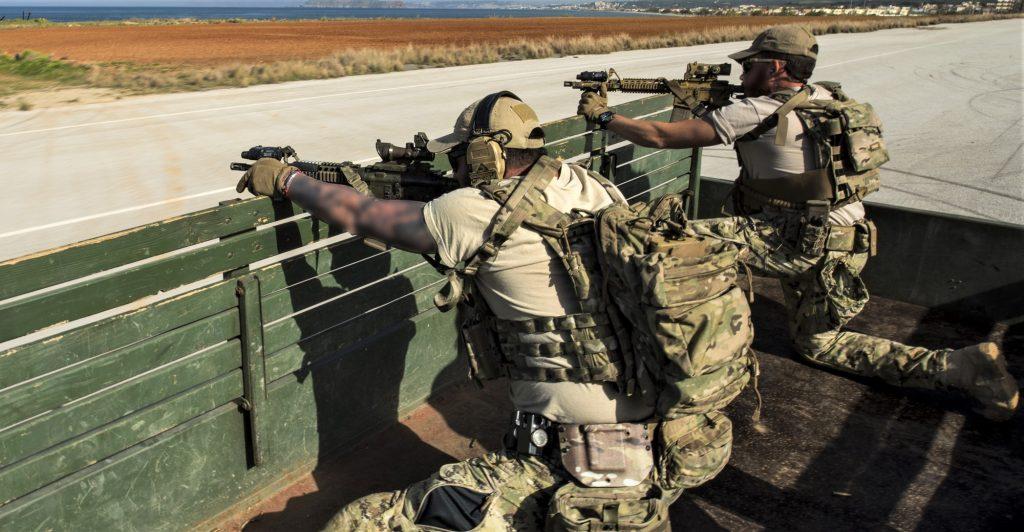
Around 2007, a more dedicated variant of the “sniper M4” or Recce was type designated the Mark 12 Mod 0/1 Special Purpose Rifle (SPR).
Using a match-grade free-floating 18-inch heavy stainless barrel with a 1:7 twist to stabilize the 77-grain M262 cartridge, the rifle was heavy, pushing 12-pounds with an optic, while running over 42-inches long, making them a bit unfriendly for CQB and tilted more toward snipers than rangers.
While shooting out to 600 yards — which is not a problem for AR platforms in 5.56 provided they use the right ammo and barrel, they proved a bit unsatisfactory when the Navy could just pick up a dedicated 7.62 NATO caliber platform, such as the FN SCAR Heavy 17 or 20 (Mk 17 or Mk 20 SSR) or KAC M110 SASS for nearly the same weight and shooting better terminal performance.
With that, Mk 12 use within the SEAL teams quickly faded away within a decade, pushed out to Marine infantry squads for use as DMRs for a while, but the Recce endures.

Today, the Navy’s frogmen teams continue the trend of running any number of tricked-out custom carbines with Noveske shorties topped with ATPIALs and AimPoint Micro T2s or EOTech XPS red dots recently making the news in an exercise.
This tracks with lots of very recent research on super short NFA Recce weapon builds using 12.5-inch barrels coupled with ballistics data at distance.
Shortcomings
A lot of guys can get lost in the sauce when it comes to a Recce Rifle concept, obsessing over ounces, inches, and precision — and swapping out glass, gear, handguards, stock, and BCGs every six months—in short, chasing an obsession with performance.
This can get expensive very quickly. While we usually say, “do what makes you happy so long as it doesn’t hurt anyone,” be aware of this personal glue trap that crops up probably more with this type of AR than any other.
Parting shots
With the proper setup, a good Recce may be the only AR you ever have to buy, replacing a personal plinker, budget range rifle, a better sporting rifle for the field, and a medium-to-long distance precision rifle, covering your bases with a single receiver providing you make good choices. That is all there is to it.
Updated
January 2, 2026 — We’ve added a much deeper component guide for those interested in building a recce rifle all their own.
Sign up for our newsletter
Get discounts from top brands and our latest reviews!

